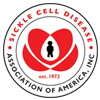Trusted Resources: Evidence & Education
Scientific literature and patient education texts
Predictors of acute care utilization and acute pain treatment outcomes in adults with sickle cell disease: The role of non-hematologic characteristics and baseline chronic opioid dose
source: American journal of hematology
year: 2018
authors: Carroll CP, Cichowitz C, Yu T, Olagbaju YO, Nelson JA, Campbell T, Lanzkron S
summary/abstract:Despite its rarity in the United States, sickle cell disease accounts for a disproportionate amount of healthcare utilization and costs. The majority of this is due to acute care for painful crises. A small subpopulation of patients accounts for most these costs due to frequent visits to emergency departments and acute care facilities. Previous investigations have found that these high utilizing patients are distinguished by both a more severe disease course and certain non-hematologic characteristics, which may include higher socioeconomic status and some psychiatric and psychological characteristics. This prospective observational cohort study was undertaken to test the ability of these characteristics to prospectively predict acute pain care outcomes, including visit frequency, total opioid doses, and pain improvement at the Johns Hopkins Sickle Cell Infusion Center (SCIC).
Seventy-three participants were followed for 12 months and SCIC utilization and treatment outcomes were tabulated for 378 visits. Participants who visited the SCIC most frequently had markedly worse pain improvement despite higher within-visit opioid doses. Higher utilization was associated with indicators of greater illness severity, more aggressive treatment for sickle cell disease, higher baseline opioid doses, higher socioeconomic status, greater pain-related anxiety, and a history of psychiatric treatment. Overall, poor acute pain treatment response was associated with higher utilization and higher baseline opioid doses. The pattern of association between high utilization, poor acute care outcomes, and higher baseline opioid doses is discussed in terms of prior research and future directions.
organization: The Johns Hopkins School of Medicine, USA; The Johns Hopkins School of Medicine and Bloomberg School of Public Health, USA; University of Maryland School of Medicine, USA; University of Colorado School of Medicine, USA; University of Rochester School of Medicine and Dentistry, USADOI: 10.1002/ajh.25168
read more full text
Related Content
-
Living With Sickle Cell: ‘I Don’t Know What It Means to Be Without Pain’Once a month, she undergoes a grueling p...
-
CMO Speaks: Making ED Care Better for SCD – Progress in 2023Welcome to CMO Speaks, a blog featuring ...
-
When Pain Can Be Eased by Drinking Enough WaterWhen he was only seven, and on holiday a...
-
Unanticipated consequences identified after implementation of a pediatric emergency department (PED)-based intranasa...Background: The 2014 National Heart Lun...
-
SCDAA And MedicAlert Pilot Program ApplicationSCDAA and MedicAlert Pilot Program Impr...
-
Improving Quality of Life Through Sickle Cell Research: Marsha J. Treadwell, MDhttps://www.youtube.com/watch?v=DA51AAUH...
-
Sickle Cell Disease Coalition (SCDC)https://www.youtube.com/watch?v=oQP-Uq0B...
To improve your experience on this site, we use cookies. This includes cookies essential for the basic functioning of our website, cookies for analytics purposes, and cookies enabling us to personalize site content. By clicking on 'Accept' or any content on this site, you agree that cookies can be placed. You may adjust your browser's cookie settings to suit your preferences. More Information
The cookie settings on this website are set to "allow cookies" to give you the best browsing experience possible. If you continue to use this website without changing your cookie settings or you click "Accept" below then you are consenting to this.




 +myBinder
+myBinder
